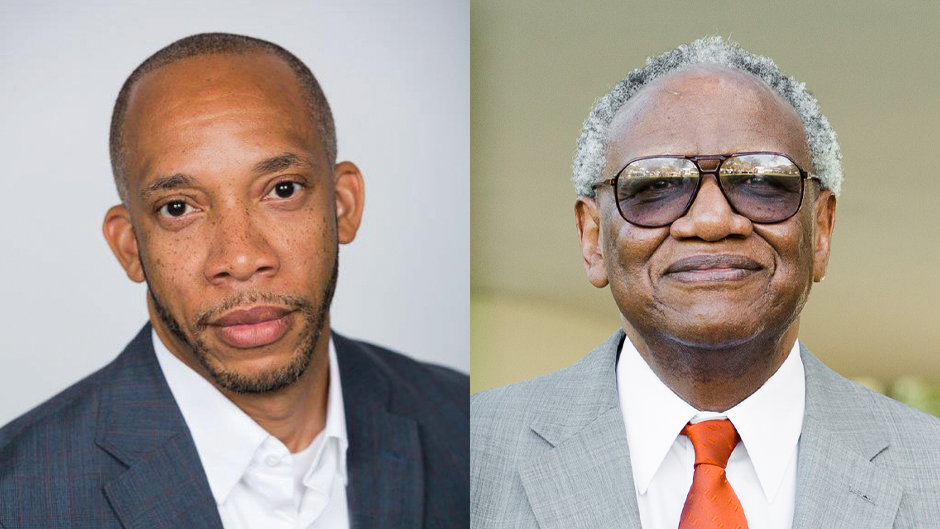To truly honor Juneteenth, the national holiday that celebrates the proclamation at the end of the Civil War that all enslaved people were free, Donald Spivey, celebrated history professor and, for several years, the University’s special advisor on racial justice, urges a day of reflection.
“Juneteenth is a time for commemoration and serious contemplation—it cannot be simply a day of picnics, parades, barbecues, and ‘celebration,’ a ‘Day of Jubilation,’” said Spivey in a presentation to the University of Miami Black Alumni Society. “People of African descent in this nation must devote some time to think about what this day tells us about the American nation and the place of Black folk in it.”
Spivey emphasized that while the decree, issued June 19, 1865—hence the “Juneteenth” designation—did proclaim that “all slaves are free,” it simultaneously portended the enormous challenges ahead for those no longer bound to their owners.
“Imagine that you are a Black person in Galveston, Texas, when Union Maj. Gen. Gordon Granger and his two thousand soldiers of the 13th Army arrive and announce that you are now free,” said Spivey, in referencing the order’s precise language that “the freedmen are advised to remain at their present home and work for wages” and that they were prohibited from “collecting at military posts and will not be supported in idleness there or elsewhere.”
“General Order No. 3 is a frank statement and warning to Blacks that the future for you in the United States of America will be full of challenges,” Spivey said.
Charlton Copeland, a professor in the School of Law whose research explores the relationship between race and American political institutions and structures, outlined the convoluted legislation that led to the Juneteenth proclamation.
He explained that the Emancipation Proclamation, published on Jan. 1, 1863 and which launched the legal process, was an executive order and war measure issued by President Abraham Lincoln under his commander-in-chief authority.
“It was justified as a way of depriving the Confederate states of the benefit of slave labor during the prosecution of the Civil War,” Copeland said. “As such, the Emancipation Proclamation declared only slaves held in Confederate states to be free. Slaves in states that remained in the Union were not freed under the Emancipation Proclamation.”
The 13th Amendment, passed by Congress on Jan. 31, 1865, and ratified on Dec. 6 that year, freed slaves across the United States. The amendment solidified slavery's abolition because the Emancipation Proclamation could have been revoked by a president not committed to abolition of slavery.
“The Emancipation Proclamation had not freed slaves in non-Confederate, slaveholding states. Beyond nationalizing abolition, the amendment essentially overruled the Supreme Court's infamous Dred Scott decision, which had nearly nationalized the institution of slavery,” Copeland said.
However, the amendment also sparked a constitutional problem in that it also inadvertently undermined the Three-Fifths Compromise, which had limited the power of the southern slaveholding states by only counting slaves as three-fifths persons for apportionment purposes, he explained.
“The abolition of slavery essentially made former slaves ‘whole’ people for apportionment purposes, thereby potentially giving the Confederate states more power than during the antebellum period,” Copeland added. “This triggered the rise of calls for Black voting rights.”
Yet the amendment allowed the continuation of involuntary slavery in the event of the conviction of a crime within the United States.
“This was one of the many miscalculations of the Republican Party (Lincoln’s party) that underestimated the extent to which racism would continue to pervade the politics of the American South in the aftermath of the Civil War,” Copeland said. “But it also speaks to the reluctant liberatory impulses of the Republican Party. That is, their own anti-Black racism also underwrote their willingness to believe that freed slaves would be more inclined toward criminal behavior.”
Spivey highlighted how African Americans struggled in the Reconstruction era of 1865 to 1877 to overcome what he referred to as “the New Slavery,” repressive measures often backed by law enforcement that manifested into the Jim Crow laws which enforced racial segregation.
“The conception of criminalization as governance of American racial policy is demonstrated most prominently in the continued constitutionality of state laws disfranchising those convicted of crimes,” noted Copeland.
These laws were aimed at Blacks and had the effect of disproportionately adversely impacting Black electoral capacity, he added, referencing Elizabeth Hinton’s scholarly work documenting the Richard Nixon and Ronald Reagan eras War on Crime/Drugs that so prejudiced Black and “brown” men.
“Studies have shown that incarcerated workers today—much like those in southern prisons in the early 20th century—reap huge financial rewards for private corporations of state governments, without very many protections,” Copeland said.
Spivey highlighted that, while the legacy of slavery persists today, the University has made considerable progress toward dissolving its remnants, especially in recent years.
“The University of Miami, I am pleased and proud to report, has chosen to be part of the solution. Since the issuance of [former] President [Julio] Frenk’s 15-point plan in July of 2020, the U has been moving steadily forward,” said Spivey, named the president’s special advisor for the initiative.
Spivey highlighted that in the academic year following its launch, 14 new Black faculty members were added; the Johnny Taylor Family UTrailblazers Experience, honoring the legacy of the University’s first Black graduates, opened; the Center for Global Black Studies was inaugurated; and the first University building ever named after a Black person—the Harold Long Jr. and H.T. Smith Student Services Building, was dedicated.

